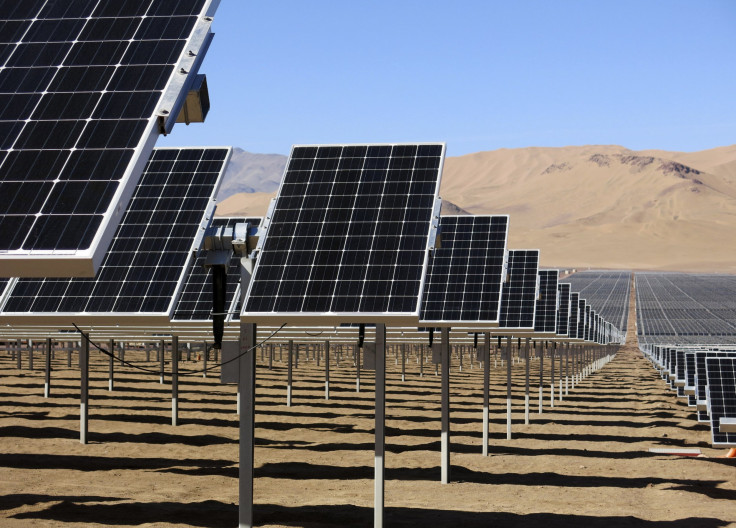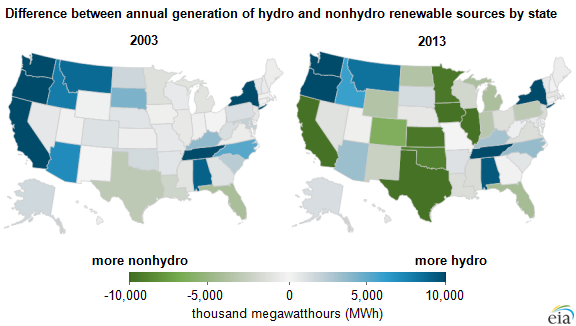Solar And Wind Power Poised To Overtake Hydropower As Largest Source Of U.S. Renewable Electricity Generation: EIA

Hydropower, long the main source of U.S. renewable energy supplies, is about to cede its throne to solar, wind, geothermal and biomass power for the first year in history, federal projections show. The takeover marks an important milestone for the renewables sector, which has seen new installations crop up at record speeds thanks to government incentives and growing concerns about global warming.
April marked the eighth consecutive month that total monthly “nonhydro” renewable power generation topped that of hydropower generation, the U.S. Energy Information Administration, the statistics arm of the Department of Energy, reported on Thursday. Only a decade ago, U.S. hydropower accounted for three times as much generation as nonhydro sources.

Wind and solar power in particular are driving the shift, fueled by state mandates that require utilities to obtain a certain percentage of renewables and federal tax credits, including the since-expired Production Tax Credit for wind farms. Declining hardware and financing costs have made it cheaper and easier to adopt renewables. The average price of a solar panel, for instance, has dropped by 60 percent since the start of 2011.
At the same time, hydropower is on the decline in arid states like California, where a crippling three-year drought is shrinking reservoirs and straining water supplies.
“EIA projects that 2014 will be the first year in which annual nonhydro renewable generation surpasses annual hydropower generation,” the agency said. According to its long-term outlook, “by 2040, nonhydro renewables are projected to provide more than twice as much generation as hydropower.”
Last year, nonhydro sources accounted for roughly 6.2 percent of all U.S. electricity generation, while conventional hydropower supplied about 6.6 percent of the country’s energy resources.
In the first five months of 2014 – the latest data available – those numbers have not only grown but swapped. Solar, wind and other sources made up about 7.4 percent of all U.S. generation, while hydropower made up about 7 percent of the total, according to the EIA’s Electric Power Monthly published this week.

Some environmental groups champion the rise of nonhydro renewables over hydropower. Large-scale dams and their accompanying reservoirs require massive amounts of land clearing, a process that destroys forests, wildlife habitat and agricultural land, the Union of Concerned Scientists notes on its website. In energy-hungry developing countries like Brazil and China, however, hydroelectric plants are favored by government leaders and electricity providers because they can supply massive amounts of electricity from a single source.
© Copyright IBTimes 2024. All rights reserved.




















